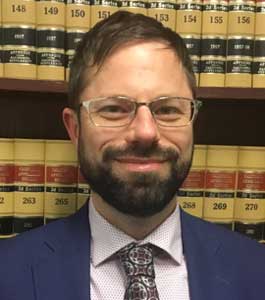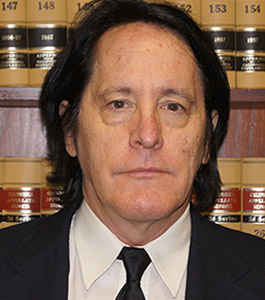
Gang Membership Does Not Prove Intent to Kill
On December 1st, 2022, the Supreme Court of California published its opinion on defendant and appellant Nicholas Hoskins’ appeal in the case of People v. Ware et al. In it, the Supreme Court of California reversed Hoskins’ conspiracy to commit murder conviction, finding that the evidence presented at trial was insufficient to establish the requisite specific intent. This opinion’s primary significance is that it establishes that membership in a gang with a tacit, long-standing agreement to kill rival gang members is insufficient to prove an individual’s intent to participate in those killings. The following paragraph will provide a brief summary of the opinion. For a more detailed analysis, please continue reading below. This section will discuss further the details of this opinion.
Hoskins’ appeal focuses on the mental elements of a murder conspiracy crime. Conspiracy to commit murder requires that the defendant must both agree to, and intend to participate in, committing premeditated first-degree murder (19). Hoskins’ appeal argued that the prosecution failed to prove beyond reasonable doubt that Hoskins held such convictions. The Supreme Court agreed and reversed Hoskins’ conviction, stating that “[the] evidence … shows only that Hoskins associated with people involved in various violent criminal activities, and not that he held any specific intent to join them in those activities” (22-23). An important aspect of the law regarding this case is that the First Amendment protects against guilt by association. It is not illegal to merely be a member of a group with criminal aims. It is also not illegal to be aware of, approve of, or in some cases even benefit from, those aims (17-18). Through its opinion, the Supreme Court further reinforces that mere association with or membership in any group with violent aims, at any level, is insufficient to prove the requisite specific intent of a murder conspiracy crime.
Analysis of People v. Ware Supreme Court of California Opinion
On December 1st, 2022, the Supreme Court of California published its opinion on defendant and appellant Nicholas Hoskins’ appeal in the case of People v. Ware et al. On July 21st, 2020, the California Fourth District Court of Appeals filed its opinion on Hoskins’ original appeal in which they reversed Hoskins’ gang conspiracy conviction but affirmed his murder conspiracy conviction. However, the Supreme Court of California’s opinion reversed Hoskins’ conspiracy to commit murder conviction, finding that the evidence presented at trial was insufficient to establish the requisite specific intent. This opinion’s primary significance is that it establishes that membership in a gang with a tacit, long-standing agreement to kill rival gang members is insufficient to prove an individual’s intent to participate in those killings. This article will discuss further the details of this opinion. Citations will be page numbers of the original opinion, which you can find here, along with further resources: https://law.justia.com/cases/california/supreme-court/2022/s263923.html.
As the charge in question is a conspiracy charge, here is some background information on conspiracy crimes.
“Conspiracy … crime has four elements:
C1. The existence of an agreement between at least two persons.
C2. The specific intent to agree to commit an offense.
C3. The specific intent to commit the offense that is the object of the agreement.
C4. An overt act in furtherance of the conspiracy, which may be committed by any conspirator.” (13 [reformatted for readability])
While the first (C1) and fourth (C4) elements amount to material conditions, the second (C2) and third (C3) elements amount to mental states which prove “specific intent to both agree to the conspiracy and to commit the object offense. Proof of these elements is what separates a co-conspirator from a mere bystander to the crime.” (15). In other words, an individual is a co-conspirator if and only if they possess mental states (C2) and (C3). In particular, conspiracy to commit murder requires that the defendant must agree to, and intend to participate in, committing premeditated first-degree murder (19). Hoskins’ appeal argued that the prosecution failed to prove beyond reasonable doubt that Hoskins held such convictions. The Supreme Court agreed and reversed Hoskins’ conviction.
An important aspect of the law regarding this case is that the First Amendment protects against guilt by association. It is not illegal to merely be a member of a group with criminal aims. It is also not illegal to be aware of, approve of, or in some cases even benefit from, those aims. Something more robust—specifically, co-conspiratorship—is required for an individual to be committing a crime. (17-18) California law also reflects this stance. So, membership in a gang that has a long-standing agreement to kill rival gang members is not a criminal act.
The original Court of Appeals opinion indicated that while not a criminal offense, membership in such a group is sufficient evidence to support a conspiracy charge. So, the Attorney General requested a partial publication because it “upholds the conspiracy to commit murder convictions…based on the broad context of forming an agreement amongst the gang members to kill rival gang members, without any agreement as to specific time, person or place that any killing would take place” (12-13). It seems the Supreme Court sought to rectify this, evidenced by their statement: “[w]e granted Hoskins’s petition for review to address the nature of the evidence necessary to establish participation in the charged murder conspiracy” (13).
Another important aspect is that an appellate court must “presume in support of the judgment the existence of every fact the jury could reasonably have deduced from the evidence” (20). In other words, the judges reviewing the appeal must assume that the jury deduced all reasonably deducible facts based on the evidence presented at trial. Conversely, they must also reject any facts which could not have reasonably been deduced.
These are important because, in its decision, the Supreme Court of California felt that the evidence presented at trial did not prove beyond a shadow of a doubt that Hoskins’ had any intent to kill. While the opinion discussed multiple categories of evidence they found lacking, one, in particular, is especially relevant to the overall significance of this opinion: Hoskins’ membership of a subset of his gang known as the “Hit Squad.” This group purportedly had more shooters and kills than another group in the gang called the “Hound Unit.” Based on Hoskins’ membership of this group, the Attorney General argued that “a reasonable jury could have inferred that such membership reflects an intent to join the conspiracy and to commit murder” (22).
The Supreme Court disagreed with this, stating that
“[w]ithout more evidence about the internal workings of the Hit Squad or its requirements for membership, evidence that Hoskins was part of the Hit Squad—like evidence that he was part of the 5/9 Brim gang in general—shows only that Hoskins associated with people involved in various violent criminal activities, and not that he held any specific intent to join them in those activities” (22-23)
Based on the evidence, there was no reason to suspect that killing rival gang members was a requirement for membership in the Hit Squad. On the contrary, the Supreme Court stated,
“[t]he limited evidence on this subject at trial instead showed that many members of the Hit Squad were relatives, and suggested that the Hit Squad “subset” was, at least in part, a generational grouping within the gang. Nor was there evidence tending to show that the choice to become a 5/9 Brim gang member in general was necessarily also a choice to participate in a long-running, nonspecific conspiracy to commit murder” (23).
Through these statements, the Supreme Court further reinforces that association with or membership in any group, at any level, is insufficient to prove the requisite specific intent of a conspiracy charge, especially conspiracy to commit murder.
| Robert Beles | - | State Certified Criminal Law Specialist |
| Anne Beles | - | State Certified Criminal Law Specialist |
| Paul McCarthy | - | State Certified Appellate Law Specialist |
| Emilio Parker | - | State Certified Immigration Law Specialist |

Contact us for a free consultation: (510) 836‑0100
Let our experience work for you. We can help!




















